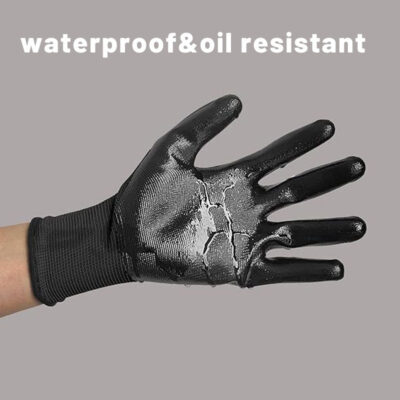Introduction: The Science Behind Warmth and Comfort
When temperatures drop, the difference between an average pair of gloves and a premium one comes down to thermal efficiency. Professional winter gloves manufacturers invest heavily in research and material innovation to create products that retain warmth, resist moisture, and ensure all-day comfort.
Whether for skiing, outdoor work, or daily wear, the right thermal glove design enhances both user experience and brand reputation.
1️⃣ The Core of Thermal Efficiency: Multi-Layer Construction
High-performance winter gloves are built using advanced multi-layer structures. Typically, they include:
-
Outer Shell: Made of waterproof nylon or leather to block wind and snow.
-
Insulation Layer: Often Thinsulate™, fleece, or hollow fiber for heat retention.
-
Inner Lining: Soft cotton or microfleece to absorb sweat and provide comfort.
Top thermal gloves factory teams test each layer combination to achieve optimal warmth-to-weight balance, ensuring users stay protected without sacrificing flexibility.
2️⃣ The Role of Materials and Technology
Modern winter glove production involves cutting-edge technologies such as thermal bonding, moisture-wicking membranes, and reflective insulation. Some manufacturers also use eco-friendly fillings derived from recycled polyester fibers—helping reduce the carbon footprint while maintaining superior performance.
A reliable insulated gloves supplier will ensure the right balance between heat preservation, breathability, and durability—critical factors for outdoor professionals and sports enthusiasts alike.
3️⃣ Customization and Branding for Retail and OEM Orders
Retailers and wholesalers often require OEM or private-label solutions to match their target markets. Manufacturers offer various customization options including color schemes, size grading, and brand logo embroidery.
By working with a custom gloves manufacturer, brands can personalize insulation levels or select different waterproofing technologies (like TPU or PU membranes) depending on climate requirements.
4️⃣ Waterproofing and Moisture Control
One of the biggest challenges for winter gloves is keeping hands dry without trapping moisture inside. This is where breathable membranes such as GORE-TEX or HIPORA come in. They allow water vapor to escape while preventing snow or rain from entering.
Leading factories test gloves in real cold chambers to verify insulation performance and moisture control, ensuring consistent quality across production batches.
5️⃣ Testing and Certification Standards
Trusted manufacturers follow international standards such as EN 511 (Cold Protection) and ISO 9001 (Quality Management). This ensures every product meets the professional benchmark for insulation, dexterity, and waterproofing.
Retailers sourcing from certified suppliers benefit from consistent product performance and lower return rates—critical for building long-term customer trust.
Conclusion
In today’s competitive winterwear market, thermal efficiency defines product success. By collaborating with an experienced winter gloves manufacturer, businesses can access superior insulation technology, reliable performance testing, and scalable OEM options that align with their brand goals.
Whether you’re a wholesaler, distributor, or apparel brand, investing in quality thermal glove production will help you stay ahead of both cold weather—and the competition.





















